Elevate Your Kitchen: Discover Trendy Cabinet Designs & Smart Financing Options
Upgrading your kitchen doesn't have to be a costly endeavor.
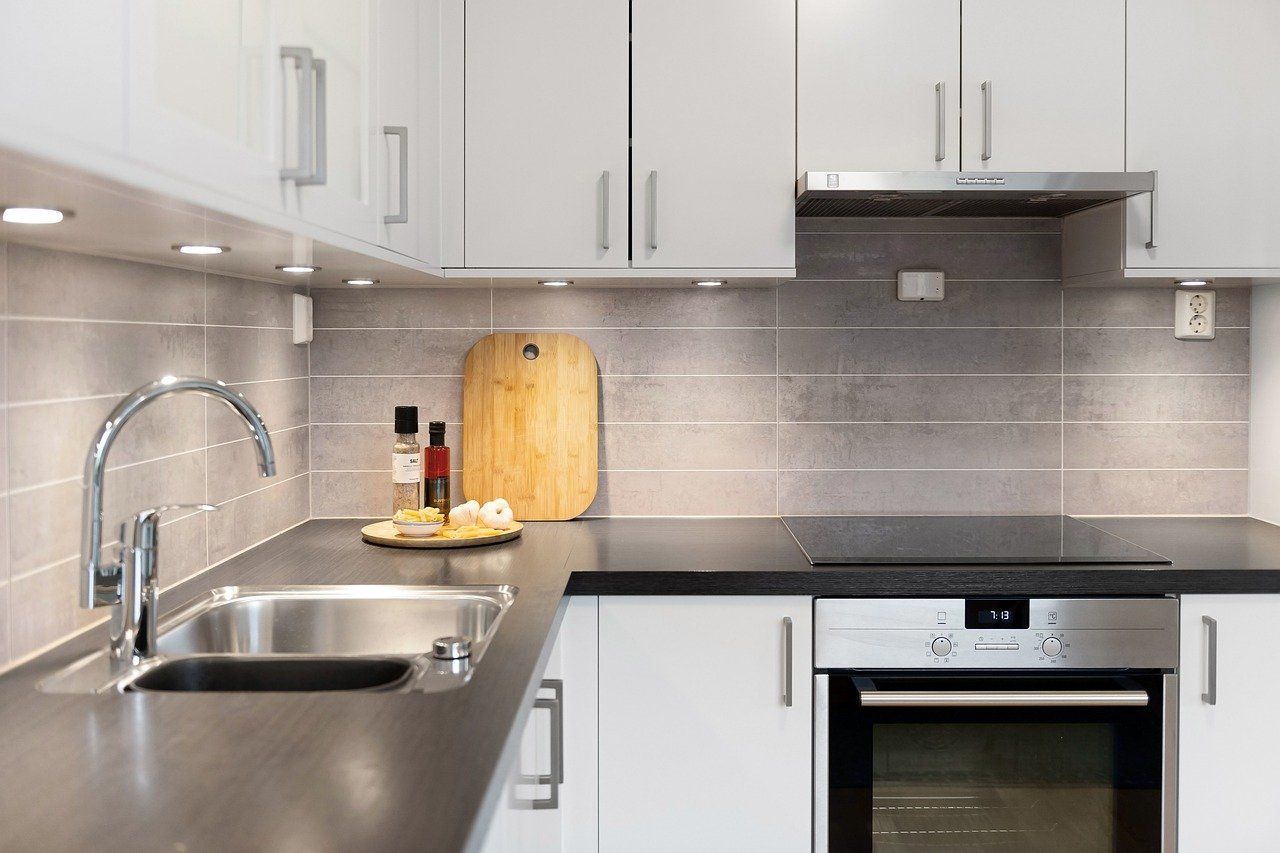
Table of Contents
- Introduction
- Step-by-Step Guide to Evaluating Kitchen Needs
- Checklist for Kitchen Evaluation
- Pros and Cons of Different Kitchen Cabinet Designs
- Trendy Kitchen Cabinet Designs
- Comparative Analysis of Cabinet Materials
- Comprehensive Guide to Modern Kitchen Appliances
- List of Common Mistakes to Avoid
- Smart Financing for Kitchen Upgrades
- How To Upgrade Your Kitchen on a Budget
- Conclusion
Key Takeaways
- Kitchen cabinets play a crucial role in defining your kitchen's overall aesthetic. Trendy designs like two-tone cabinets, open shelving, and glass-front cabinets can significantly enhance your kitchen's look.
- Staying updated with the latest kitchen designs allows you to incorporate modern and stylish elements into your kitchen, thereby increasing its functionality and appeal.
- A variety of smart financing options are available for kitchen upgrades, including home equity loans, personal loans, and kitchen improvement loans. Understanding these options can help you make an informed decision that suits your financial circumstances.
- It's essential to choose the right financing option based on your needs and preferences. For instance, personal loans might be a better choice for those who don't want to use their home as collateral.
- Upgrading your kitchen doesn't have to be expensive. With smart planning and budgeting, you can significantly improve your kitchen without breaking the bank. Tips include opting for ready-to-assemble cabinets, repurposing existing cabinets, and considering open shelving.
- Real-life examples demonstrate that budget-friendly kitchen upgrades are achievable and can result in significant savings. For instance, a homeowner saved 30% on their kitchen upgrade by opting for ready-to-assemble cabinets.
Introduction
The heart of a home truly lies in its kitchen. It's not just a place where meals are prepared, but also a space where memories are created, stories are shared, and life's simple pleasures are savored. Among the various elements that shape the character of a kitchen, cabinets hold a prominent place. They are more than just storage units; they are a canvas that reflects the personality of your home and the people living in it.
Kitchen cabinets significantly contribute to the overall look of your kitchen. Their style, color, and design can either make your kitchen look sophisticated and modern or give it a charming, rustic appeal. Furthermore, the functionality they provide is unparalleled. From storing your favorite china to neatly arranging your spice jars, kitchen cabinets are the unsung heroes that keep your kitchen organized and clutter-free.
In this article, we will embark on a journey to explore the world of kitchen cabinets. From trendy designs that are ruling the roost in the world of interior design to smart financing options that can make your dream kitchen a reality, we've got you covered. We will also provide tips on how to upgrade your kitchen without burning a hole in your pocket.
Whether you are planning to remodel your kitchen or just looking for ideas to give it a quick refresh, this article will serve as your guiding light. It emphasizes the importance of staying abreast with the latest kitchen designs and how they can transform your culinary space into a masterpiece.
So, buckle up and get ready to dive deep into the world of kitchen upgrades, and discover how you can elevate your kitchen's aesthetic appeal, functionality, and value. After all, a well-planned and beautifully designed kitchen not only enhances your cooking experience but also adds significant value to your home.
Understanding the Need for Trendy Kitchen Cabinets
In the modern age, the kitchen is no longer just a space for cooking and dining. It's transformed into a versatile hub, a space that encapsulates the essence of your home. It’s where you entertain guests, enjoy family meals, and even work on your laptop while sipping a cup of coffee. Therefore, having a kitchen that reflects your style and personality is imperative, and this is where the role of trendy kitchen cabinets comes into play.
Trendy kitchen cabinets can significantly enhance the aesthetic appeal of your kitchen, making it a space you love to spend time in. They can infuse a sense of modernity, elegance, and sophistication into your kitchen, elevating its overall look. Moreover, the need for trendy cabinets extends beyond aesthetics. Contemporary kitchen cabinets are designed keeping in mind the evolving needs of homeowners, offering improved functionality, better organization, and efficient use of space. Hence, by opting for trendy kitchen cabinets, you’re not just revamping your kitchen's look, but also enhancing its efficiency and utility.
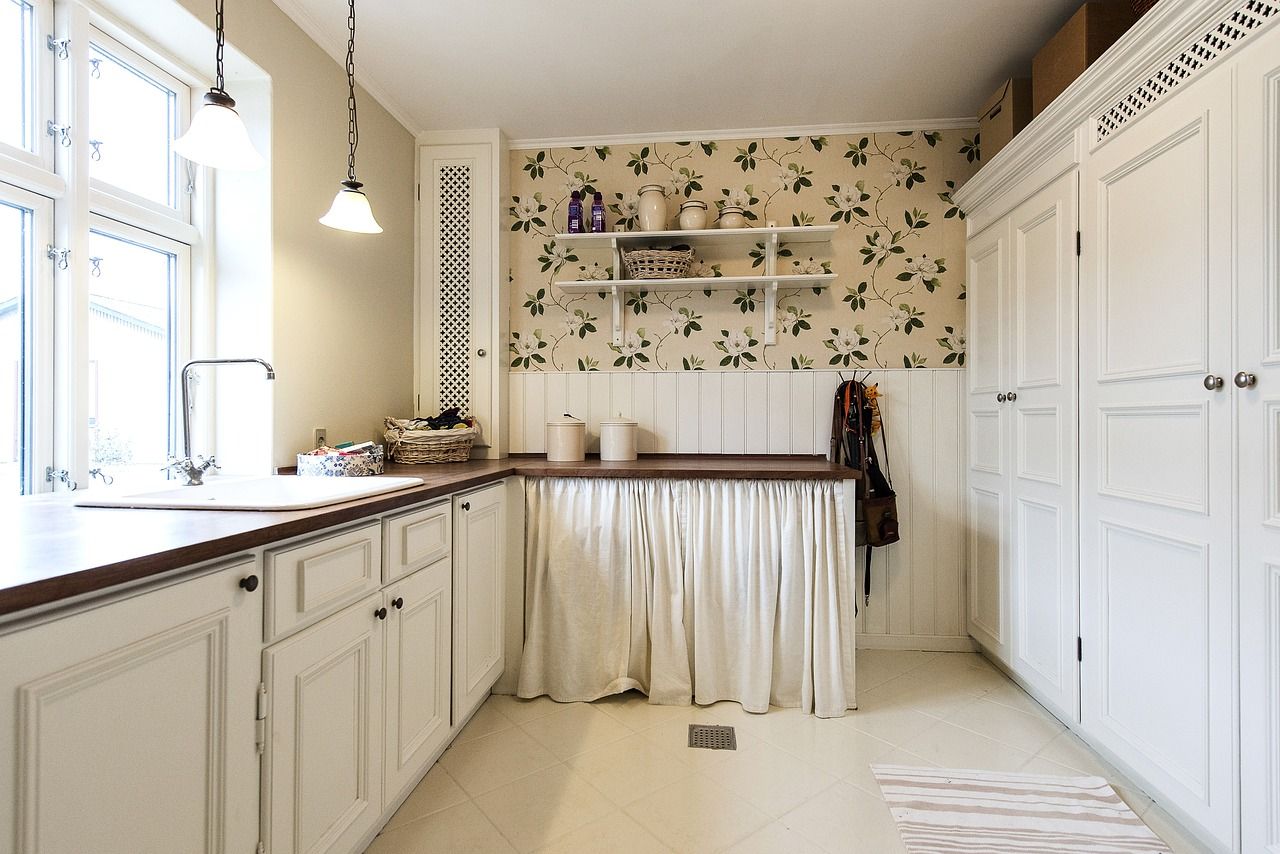
Step-by-Step Guide to Evaluating Kitchen Needs
Upgrading your kitchen can be a transformative project that not only enhances its aesthetic appeal but also its functionality, making it more aligned with your lifestyle and daily needs. To ensure that your kitchen remodel meets your expectations, it's crucial to evaluate your current kitchen's state and identify specific areas for improvement. This step-by-step guide, complete with a detailed questionnaire and checklist, is designed to help homeowners assess their kitchen's current state comprehensively.
Step 1: Assess Your Current Kitchen Layout
• Functionality: Does your current kitchen layout suit your cooking and entertaining style?
• Flow: Is there enough space between your work areas (sink, stove, and refrigerator)?
• Space Utilization: Are there underutilized spaces that could be better used?
Step 2: Storage Needs
• Cabinet Space: Are your cabinets sufficient and well-organized?
• Pantry Storage: Do you have enough pantry space for your groceries?
• Specialty Storage: Do you need storage solutions for items like spices, appliances, or pots and pans?
Step 3: Aesthetic Preferences
• Style: What kitchen style do you prefer (modern, traditional, farmhouse)?
• Colors and Materials: What color schemes and materials do you find appealing for your cabinets, countertops, and backsplash?
• Lighting: Is your kitchen well-lit, both naturally and artificially?
Step 4: Lifestyle and Usage
• Cooking Habits: How often do you cook, and what kind of meals do you prepare?
• Entertaining: Do you use your kitchen for entertaining guests?
• Family Needs: Does your kitchen need to accommodate the needs of children, elderly family members, or pets?
Step 5: Appliances and Technology
• Appliance Upgrade: Which appliances need to be upgraded or replaced?
• Technology Integration: Are you interested in smart kitchen technologies?
Step 6: Budget and Financing
• Budget Range: What is your budget range for the kitchen upgrade?
• Financing Needs: Will you require financing, and have you explored your options?
Step 7: Timeline and Project Scope
• Timeline: What is your desired timeline for completing the kitchen upgrade?
• DIY vs. Professional Help: Are you planning to DIY any part of the project, or will you hire professionals for all tasks?

Checklist for Kitchen Evaluation
- Evaluate the current layout for functionality and flow.
- Assess the adequacy of cabinet and pantry storage.
- Determine aesthetic preferences for style, color, and materials.
- Consider lifestyle factors that impact kitchen use.
- List appliances that need upgrading or replacement.
- Set a realistic budget and explore financing options.
- Define the project scope and timeline.
By methodically working through this guide, you'll be able to pinpoint precisely what you want out of your kitchen remodel. This clarity will not only help you communicate your vision to designers and contractors but also ensure that the end result is a kitchen that beautifully combines form with function, tailored to your lifestyle.
Breakdown of Popular Contemporary Kitchen Cabinetry Trends
The world of kitchen design is always evolving, and with it, the trends in kitchen cabinetry. Here are some of the most popular contemporary trends that are making waves in the world of kitchen design:
1. Two-tone Kitchen Cabinets: This trend involves using two different colors or finishes on your kitchen cabinets, usually a darker shade on the lower cabinets and a lighter one on the upper cabinets or the kitchen island. This trend is a fantastic way to add depth and visual interest to your kitchen. The contrasting colors break the monotony, making your kitchen look vibrant and dynamic.
2. Open Shelving: Open shelving is perfect for those who prefer a minimalist and airy feel in their kitchen. It allows you to showcase your beautiful dishware and adds a touch of personality to your kitchen. Moreover, open shelves provide easy access to your kitchen essentials and make the kitchen look spacious.
3. Glass-front Cabinets: Glass-front cabinets are an excellent choice for those who want to strike a balance between closed cabinets and open shelving. They allow you to display your favorite dishes and glassware while protecting them from dust. These cabinets add an elegant touch to your kitchen and create an illusion of space.
4. Flat-panel Cabinets: Known for their sleek and minimalist design, flat-panel cabinets are ideal for modern and contemporary kitchens. They offer a clean, streamlined look and are available in a variety of finishes and colors.
5. Colorful Cabinets: Moving away from the traditional whites and neutrals, colorful cabinets are a bold and vibrant trend. From deep blues and greens to pastel pinks and yellows, colorful cabinets can infuse life and personality into your kitchen.
Incorporating these trendy kitchen cabinet designs can help you create a kitchen that's not only stylish and up-to-date but also functional and efficient.
Pros and Cons of Different Kitchen Cabinet Designs
As with any design element, different kitchen cabinet styles come with their own set of advantages and disadvantages. Here's a look at some of the pros and cons of the popular kitchen cabinet trends:
1. Two-tone Kitchen Cabinets:
- Pros: Two-tone cabinets offer a visually appealing contrast that adds depth to your kitchen. They allow for creative freedom, letting you play with different color combinations to reflect your personal style.
- Cons: If not done right, two-tone cabinets can make your kitchen look disjointed. It also requires careful planning to ensure the colors complement the other elements in the kitchen.
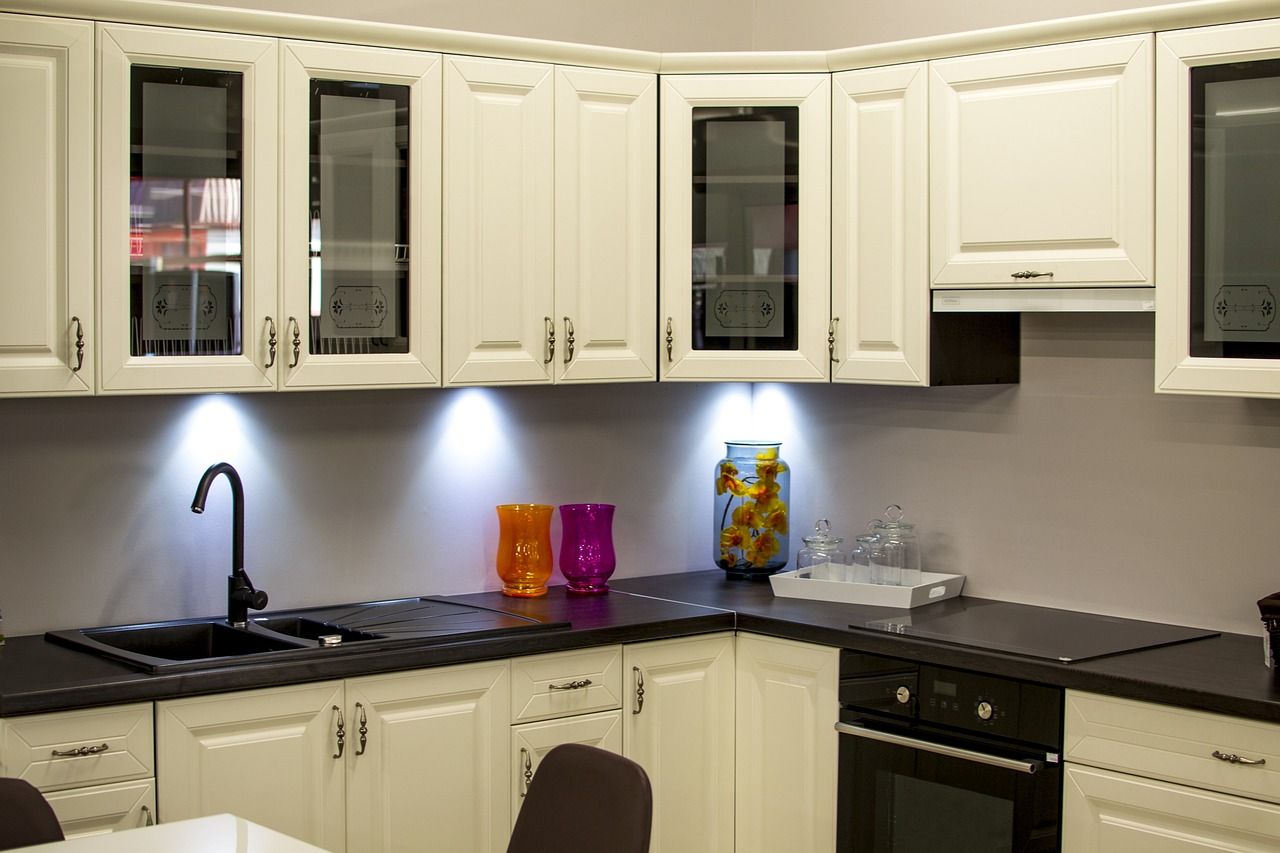
2. Open Shelving:
- Pros: Open shelves give your kitchen a spacious, airy feel. They allow you to display your kitchenware and provide easy access to frequently used items.
- Cons: Open shelves may not be ideal for those who prefer to keep their utensils out of sight. They also require regular cleaning to prevent dust buildup.
3. Glass-front Cabinets:
- Pros: Glass-front cabinets offer a balance between closed cabinets and open shelves. They are perfect for displaying your cherished dishware while protecting them from dust.
- Cons: Glass cabinets can show smudges and fingerprints, requiring regular cleaning. They also reveal clutter, so you'll need to keep your dishes organized.
4. Flat-panel Cabinets:
- Pros: These cabinets offer a sleek, modern look that fits well in contemporary kitchens. They have a clean, streamlined appearance and are available in various finishes.
- Cons: Flat-panel cabinets can show scratches and dents more easily than raised-panel cabinets. They may also lack the character and charm of traditional cabinet styles.
5. Colorful Cabinets:
- Pros: Colorful cabinets can add a pop of personality to your kitchen. They can set the mood and dictate the overall aesthetic of the space.
- Cons: Bold colors might fall out of fashion quickly. They may also overwhelm the space if not balanced with neutral elements.
Carefully considering these pros and cons can help you choose a kitchen cabinet design that not only enhances your kitchen's aesthetics but also aligns with your lifestyle and needs.
Comparative Analysis of Cabinet Materials
When planning a kitchen upgrade, choosing the right material for your cabinets is crucial. It affects not only the aesthetic appeal of your kitchen but also its durability and maintenance needs. Below is a comprehensive comparison of the most common cabinet materials: wood, plywood, medium-density fiberboard (MDF), and metal. This analysis will help you understand the pros and cons of each material, guiding you to make an informed decision that aligns with your budget, style preferences, and lifestyle.
Wood
Pros:
• Aesthetic Appeal: Wood cabinets offer a timeless and natural look that can complement any kitchen style, from traditional to modern.
• Durability: Solid wood is sturdy and can endure years of use, making it a long-lasting option for kitchen cabinets.
• Customizability: Wood can be easily stained or painted in a variety of colors and finishes, allowing for customization.
Cons:
• Cost: High-quality wood cabinets can be expensive, especially if opting for hardwoods like oak, maple, or cherry.
• Maintenance: Wood is prone to warping and swelling with changes in humidity and requires regular maintenance to keep it looking its best.
• Susceptibility to Damage: Wood can scratch and dent more easily than some other materials.
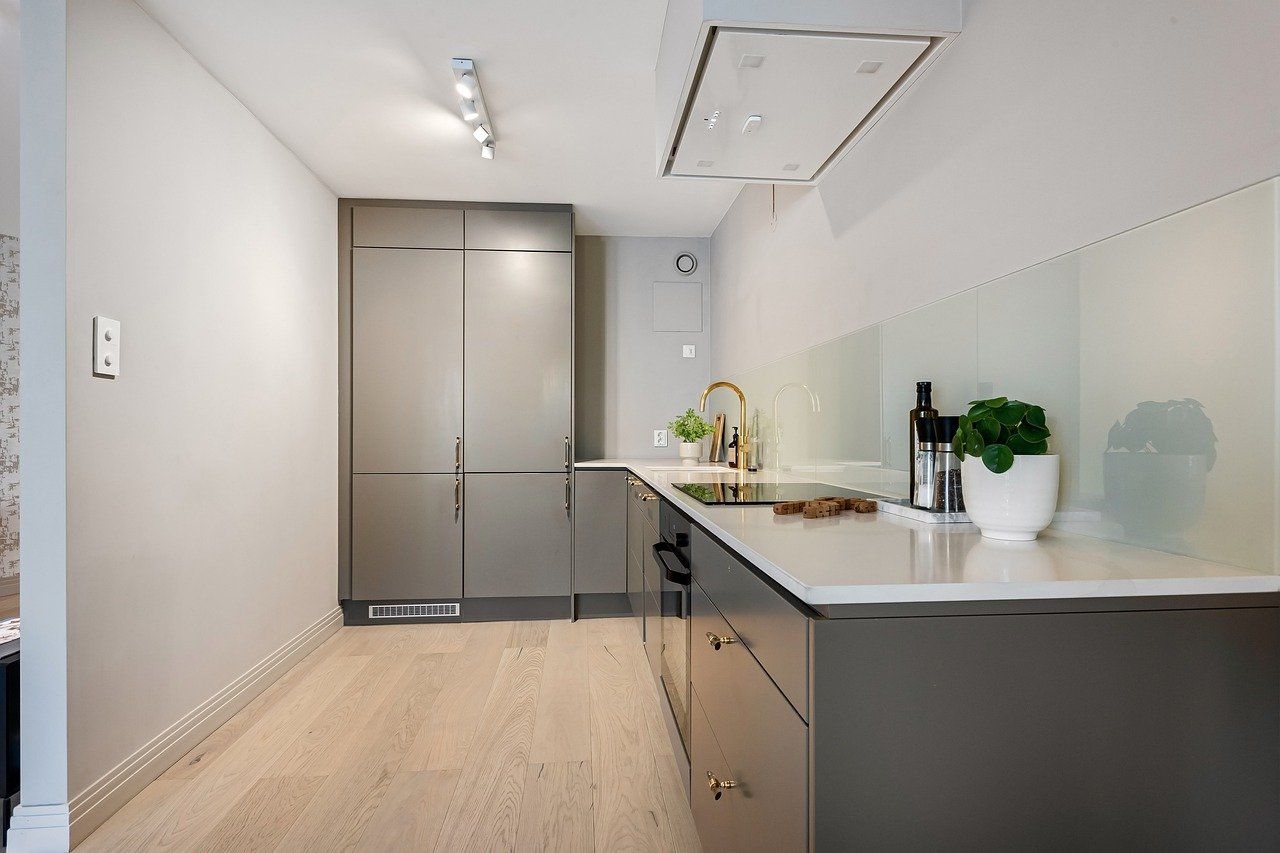
Plywood
Pros:
• Strength: Plywood is made by gluing together layers of wood veneers, making it strong and less prone to warping than solid wood.
• Cost-Effective: Generally, plywood cabinets are more affordable than solid wood while still providing a similar aesthetic and durability.
• Moisture Resistance: Higher grades of plywood offer better resistance to moisture, making them suitable for kitchen use.
Cons:
• Variance in Quality: The quality of plywood can vary significantly, with higher-quality options being more expensive.
• Aesthetic Limitations: While plywood can be finished to mimic the look of solid wood, it may not achieve the same premium feel.
Medium-Density Fiberboard (MDF)
Pros:
• Smooth Finish: MDF offers a smooth surface that's ideal for painting, resulting in a high-quality, uniform appearance.
• Stability: MDF does not warp or expand and contract as much as wood, making it a stable choice for kitchen cabinets.
• Affordability: MDF is generally less expensive than solid wood and plywood, offering a budget-friendly option.
Cons:
• Moisture Sensitivity: MDF can swell and deteriorate upon exposure to water, making it less durable in humid environments unless properly sealed.
• Weight: MDF is heavier than wood and plywood, which could require stronger support structures.
• Repair Difficulties: Damaged MDF is harder to repair than wood and can often require replacement.
Metal
Pros:
• Durability: Metal cabinets, often made of stainless steel, are highly durable and resistant to damage, including scratches and dents.
• Modern Look: Metal can give your kitchen a sleek, modern aesthetic.
• Low Maintenance: Metal is easy to clean and doesn't require the same level of upkeep as wood or MDF.
Cons:
• Cost: High-quality metal cabinets can be expensive.
• Limited Styles: Metal cabinets might not fit well with all kitchen styles, especially traditional designs.
• Noise: Metal can be noisier than other materials, as doors and drawers may close with a clang.
In conclusion, each cabinet material has its unique set of advantages and disadvantages. Your choice should be influenced by your priorities, whether they're durability, cost, maintenance, or aesthetic appeal. Understanding these factors will help you select the best material for your kitchen cabinets, ensuring they meet your needs, preferences, and lifestyle.
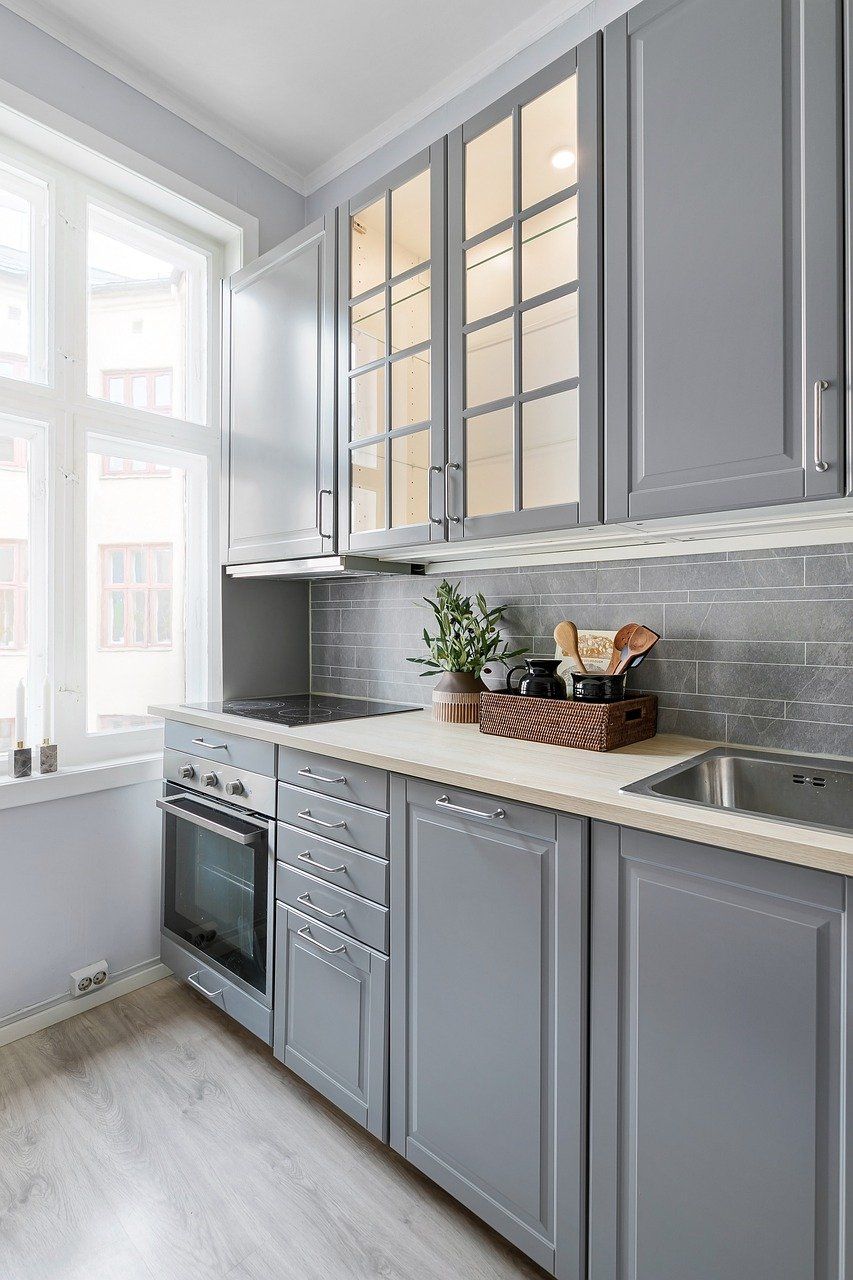
Comprehensive Guide to Modern Kitchen Appliances
Incorporating modern, energy-efficient appliances into your kitchen not only complements your new cabinetry but also enhances the overall functionality and sustainability of your space. This guide will help you navigate the selection process, ensuring you choose appliances that meet your needs, are energy-efficient, and integrate seamlessly with smart home systems.
Selecting Modern Kitchen Appliances
Energy Ratings: Look for appliances with high energy ratings. Energy Star-certified appliances, for example, are more efficient than their counterparts, reducing your utility bills and environmental impact over time.
User Reviews: Before making a purchase, research user reviews and ratings. These can provide real-world insights into the reliability, efficiency, and performance of the appliances you're considering.
Integration with Smart Home Systems: Many modern appliances offer smart features, such as the ability to control them through your smartphone or voice-activated devices. Choose appliances that can integrate with your existing smart home system for enhanced convenience and functionality.
Size and Capacity: Consider the size and capacity of the appliances, ensuring they fit your space and meet your cooking and storage needs. Measure your space carefully to avoid costly mistakes.
Style and Aesthetics: Select appliances that complement the style of your new cabinetry and the overall design of your kitchen. Consistency in design creates a cohesive look that enhances aesthetic appeal.
Functionality: Prioritize appliances that offer the functions you need most. Advanced features are beneficial, but fundamental performance should not be compromised.
List of Common Mistakes to Avoid
Underestimating Costs: One of the most common mistakes is not budgeting correctly, leading to unexpected expenses. Ensure you account for all potential costs, including appliances, labor, and any unforeseen issues that may arise.
Overlooking Functionality: While aesthetics are important, functionality should be a priority. Ensure your kitchen layout and appliance choices enhance the usability of your space.
Choosing Trends Over Timelessness: While it's tempting to go for the latest design trends, they can quickly become outdated. Opt for a balance between modern aesthetics and timeless elements to ensure your kitchen remains stylish and functional in the long run.
Neglecting Storage Needs: Adequate storage is crucial in a kitchen. Overlooking this aspect can lead to a cluttered and inefficient space. Plan your cabinetry and appliance placement carefully to maximize storage and maintain a streamlined look.
Ignoring the Workflow: A kitchen needs to have a functional workflow. The placement of the sink, refrigerator, and stove should form an efficient working triangle, minimizing unnecessary movement.
Skimping on Quality: Choosing lower-quality materials or appliances to save money can lead to higher costs in the long run due to repairs or replacements. Invest in quality where it counts.
Forgetting Ventilation: Proper ventilation is crucial in a kitchen to remove odors, heat, and grease. Ensure your kitchen design includes an effective ventilation system.
Overcomplicating the Design: A kitchen that's too busy or complicated can be difficult to use and clean. Aim for a balance between form and function, keeping the design simple and efficient.
By following these guidelines and avoiding common pitfalls, you can ensure your kitchen upgrade is successful, resulting in a space that is both beautiful and highly functional.
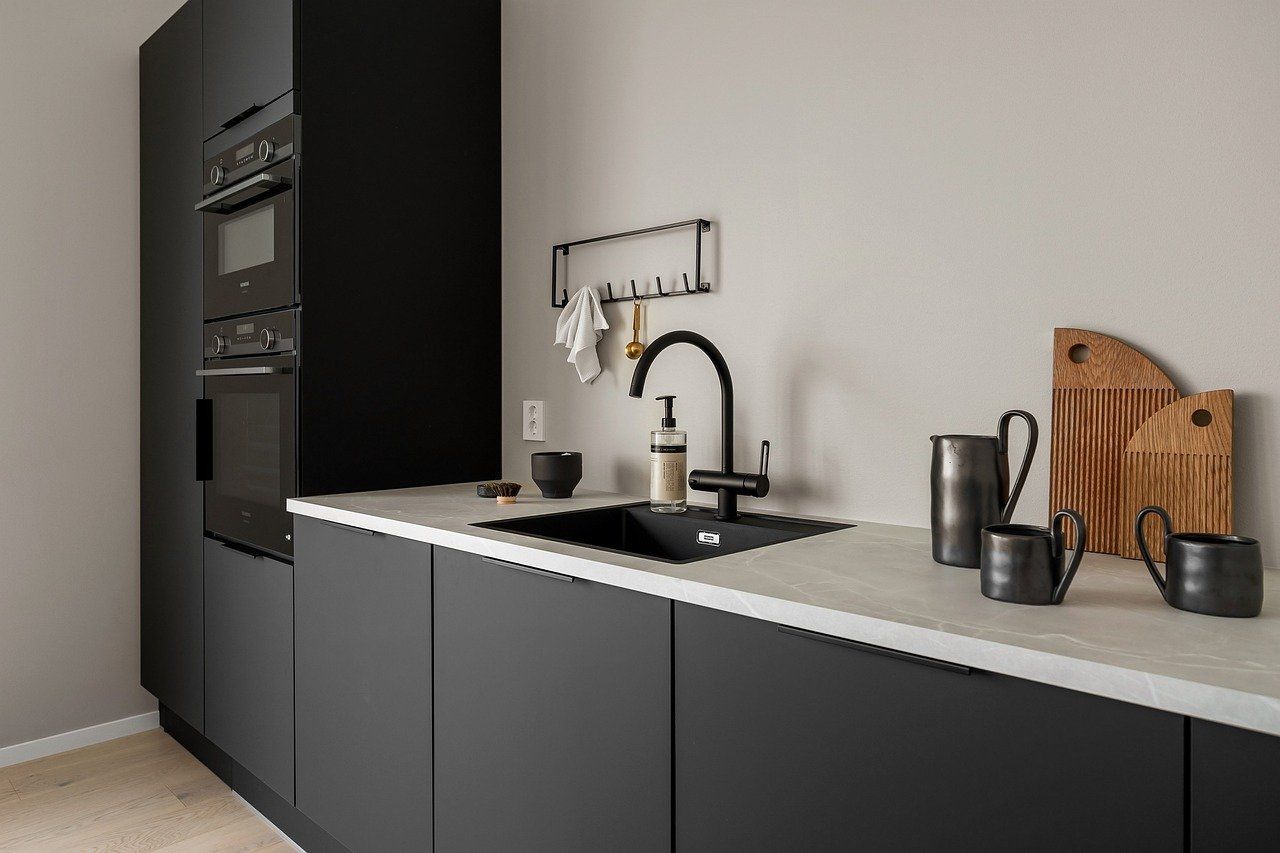
Importance of Smart Financing in Kitchen Upgrades
Kitchen upgrades can significantly enhance the aesthetic appeal and functionality of your home, but they often come with hefty price tags. That's where smart financing comes into play. Thoughtful financial planning can make your dream kitchen a reality without breaking the bank. It can help you allocate funds wisely, ensuring you make the most of your investment.
Smart financing gives you the flexibility to choose high-quality materials and appliances, leading to durable and efficient kitchen upgrades. It can also enable you to hire experienced professionals, ensuring high-quality work.
Moreover, smart financing involves exploring various funding options like savings, home equity loans, or personal loans and choosing one that suits your financial situation. It also means setting a realistic budget and sticking to it, preventing unnecessary expenses. In essence, smart financing is key to a successful kitchen upgrade, helping you achieve your desired outcomes while staying within your financial means.
Breakdown of Affordable Financing Options for Kitchen Cabinets
Kitchen cabinetry can be a significant part of your home renovation budget. Thankfully, there are several affordable financing options available:
1. Home Equity Loans: These loans allow homeowners to borrow against the equity they've built up in their home. The interest rates are typically lower than other loans, and the interest may be tax-deductible. However, it's crucial to remember that your home serves as collateral, meaning if you can't make the payments, your home is at risk.
2. Personal Loans: Personal loans can be used for any purpose, including kitchen renovations. They are often unsecured, meaning they don't require collateral. However, interest rates can vary significantly depending on your credit score.
3. Kitchen Improvement Loans: Some lenders offer loans specifically designed for home improvements. These loans can provide competitive interest rates and flexible repayment terms.
4. Credit Cards: Credit cards can be a convenient way to finance smaller cabinet upgrades. Many cards offer introductory 0% APR promotions. However, once the promotional period ends, the interest rates can be quite high.
5. Store Financing: Many home improvement stores offer financing options, including loans or credit cards with special terms. These can be a good option, especially if you're purchasing your cabinets directly from the store.
Remember, the key to affordable financing is to compare different options and understand the terms before making a decision. Always factor in the interest rates, loan terms, and any potential fees to ensure the financing option you choose aligns with your budget and financial situation.
How to Choose the Right Financing Option
Choosing the right financing option for your kitchen upgrade requires careful consideration of your financial circumstances and renovation needs. Here are some factors to consider:
1. Financial Situation: Assess your current financial situation. If you have a significant amount of equity in your home and are comfortable using it as collateral, a home equity loan could provide lower interest rates. However, if you don't want to risk your home, a personal loan might be a better option.
2. Credit Score: Your credit score significantly impacts the interest rates you'll get. If you have a good credit score, you might get favorable terms on a personal loan or credit card.
3. Budget: Consider the total cost of the kitchen cabinets and how much you can afford to repay monthly. This will help you decide on a loan amount and repayment term.
4. Loan Terms: Check the interest rates, repayment period, and any potential fees. A loan with a lower interest rate but a longer repayment term might end up costing more in the long run.
5. Urgency: If you need funds quickly, options like personal loans or credit cards might be faster than home equity loans.
Finally, always compare different options and consult with a financial advisor if needed. The right financing option should align with your financial capability and renovation goals.
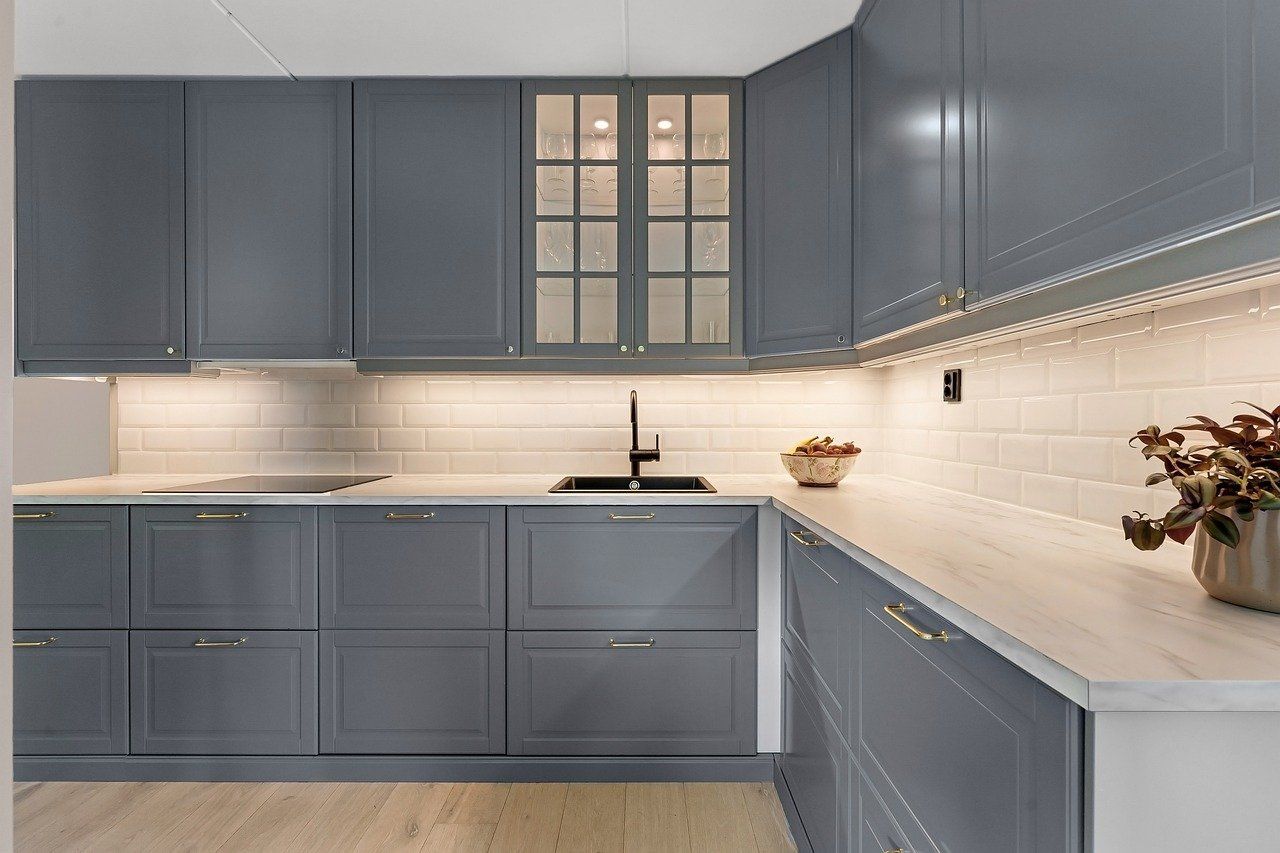
Importance of Budget-Friendly Kitchen Upgrades
Budget-friendly kitchen upgrades are crucial for homeowners who want to enhance their living space without straining their finances. Such improvements can significantly boost your home's aesthetic appeal, functionality, and even increase its market value. Budget-friendly doesn't mean compromising on quality; instead, it involves smart planning, prioritizing essential upgrades, and finding cost-effective solutions. It enables homeowners to make the most of their investment by choosing affordable materials and appliances that offer durability and style. Also, it encourages creativity in repurposing existing elements, leading to unique, personalized kitchen designs. Ultimately, budget-friendly kitchen upgrades ensure you achieve your dream kitchen while maintaining financial health.
Tips to Upgrade Your Kitchen Without Breaking the Bank
Renovating your kitchen doesn't always require a huge budget. With some smart planning and creativity, you can upgrade your kitchen without breaking the bank. Here are some tips:
1. Opt for Ready-to-Assemble Cabinets: Ready-to-assemble (RTA) cabinets can be a cost-effective alternative to custom cabinetry. They come in a variety of styles and finishes, allowing you to choose a design that suits your kitchen's aesthetic without the high price tag.
2. Repurpose Existing Cabinets: Instead of buying new cabinets, consider upgrading your existing ones. A fresh coat of paint or new hardware can give your old cabinets a brand-new look for a fraction of the cost.
3. Consider Open Shelving: Open shelving is not only trendy but also less expensive than traditional wall cabinets. They provide a great way to display dishes and decor, adding a personal touch to your kitchen.
4. Choose Budget-Friendly Countertops: Instead of opting for high-end materials like granite or marble, consider budget-friendly alternatives like laminate or butcher block. These materials can still offer durability and style but at a much lower cost.
5. Buy Energy-Efficient Appliances: While energy-efficient appliances may cost more up-front, they can save money in the long run by reducing your energy bills.
6. Do It Yourself: If you're handy, consider doing some of the work yourself. Painting walls, installing a backsplash, or even assembling RTA cabinets can save on labor costs.
7. Plan Your Layout Wisely: A well-planned layout can maximize your kitchen's functionality. Avoiding unnecessary structural changes can also save on renovation costs.
8. Shop Sales and Discounts: Keep an eye out for sales at home improvement stores or discounts on online platforms. You can often find high-quality materials and appliances at reduced prices.
Remember, upgrading your kitchen should be a balance between style, functionality, and budget. With these tips, you can create a kitchen that not only looks great but also meets your financial needs.
Real-Life Examples of Budget-Friendly Kitchen Upgrades
Mark and Sarah, homeowners in San Diego, embarked on a kitchen upgrade with a limited budget. They saved 30% on cabinet costs by opting for ready-to-assemble cabinets instead of custom ones. The couple also repurposed their old dining table into a kitchen island, saving them the cost of buying a new one.
Similarly, Jane, a homeowner in Chicago, transformed her kitchen by replacing her old laminate countertops with a more affordable butcher block countertop. She also painted her existing cabinets and changed their hardware, giving her kitchen a fresh look without spending a fortune.
These examples show how strategic choices can lead to significant savings in kitchen upgrades.
In Conclusion, upgrading your kitchen doesn't have to be a costly endeavor. With strategic planning, creativity, and a little bit of elbow grease, you can transform your kitchen into a functional and beautiful space without draining your savings. From opting for ready-to-assemble cabinets to repurposing existing ones, considering open shelving, choosing budget-friendly countertops, investing in energy-efficient appliances, doing some DIY, planning your layout wisely, and shopping smartly, there are numerous ways to achieve an impressive kitchen upgrade on a budget.
Real-life homeowners like Mark, Sarah, and Jane have shown us the way by making smart and budget-friendly choices that resulted in significant savings. Their experiences serve as an inspiration and a blueprint.
So, don't hold back from taking the first step towards your kitchen upgrade. Remember, a dream kitchen doesn't have to cost a fortune. With these cost-saving tips in mind, you can create a kitchen space that's stylish, functional, and uniquely yours, all while staying within your budget.

